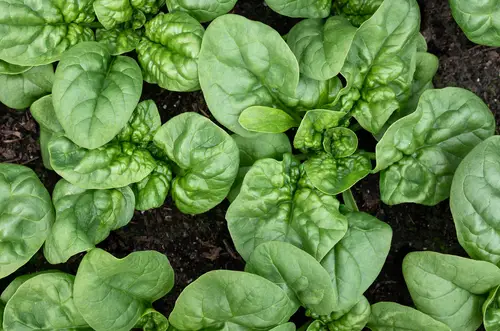White spots on spinach leaves can be a cause for concern for many gardeners. While spinach is a healthy and nutritious vegetable, the appearance of white spots on its leaves may lead to questions about its safety for consumption. In this article, we will explore the causes of white spots on spinach leaves and whether they are safe to eat.
Understanding the causes of white spots on spinach leaves is essential to determine whether they pose a risk to human health. These spots can be caused by a variety of factors, including diseases, insect damage, and environmental stress.
Some of the most common diseases that cause white spots on spinach leaves include downy mildew, white rust, and leaf spot. Insect damage from pests like whiteflies and leafhoppers can also cause white spots on spinach leaves.
Despite the unsightly appearance of white spots on spinach leaves, they are generally safe to eat. However, it is essential to ensure that the spinach is thoroughly washed before consumption to remove any dirt, debris, or harmful bacteria that may be present.
Additionally, it is recommended to discard any spinach that shows signs of rot or decay to avoid any potential health risks.
Key Takeaways on Are Spinach With White Spots Safe to Eat
- White spots on spinach leaves can be caused by diseases, insect damage, and environmental stress.
- While white spots on spinach leaves are generally safe to eat, it is essential to thoroughly wash the spinach before consumption and discard any spinach that shows signs of rot or decay.
- Maintaining healthy spinach plants through proper care and prevention methods can help prevent the occurrence of white spots on spinach leaves.
Check out these other related posts:
Understanding White Spots on Spinach Leaves
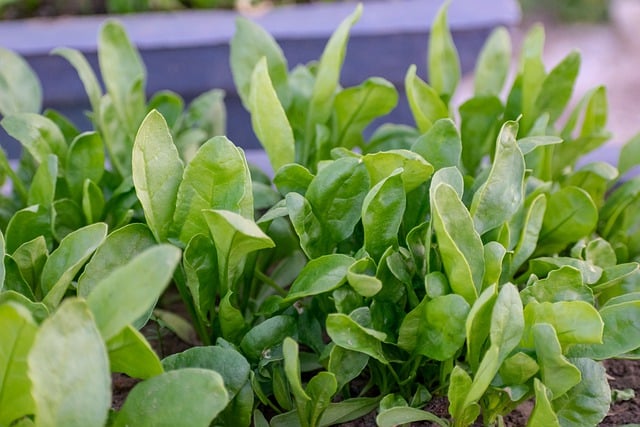
White spots on spinach leaves can be a cause for concern for many gardeners and consumers. However, it is important to understand that not all white spots are the same. Some white spots on spinach leaves are completely normal and safe to eat, while others may indicate a disease or pest infestation.
One common cause of white spots on spinach leaves is the presence of trichomes. Trichomes are small, hair-like structures that grow on the surface of spinach leaves. These structures can appear as white spots, and they are completely harmless. In fact, trichomes are actually beneficial to the plant, as they help to protect it from pests and diseases.
However, if the white spots on spinach leaves are accompanied by lesions or blisters, it may be a sign of a fungal disease such as white rust.
White rust is a common spinach disease that can cause significant damage to the plant if left untreated. It is important to identify and treat white rust as soon as possible to prevent it from spreading to other plants.
Another possible cause of white spots on spinach leaves is pest infestation. Sucking insect pests like whitefly or leafhoppers can cause small white dots on the top and bottom leaf surface.
Brushing the plants will cause them to fly up if they are present. Identifying and treating pest infestations early is crucial to prevent damage to the plant and ensure a healthy harvest.
Common Diseases Causing White Spots
Spinach plants are susceptible to various fungal diseases and pests that can cause white spots on the leaves. In this section, we will discuss some of the most common diseases that cause white spots on spinach leaves.
1. Downy Mildew
Downy mildew is a fungal disease caused by Peronospora farinosa f. sp. spinaciae. It is one of the most common diseases affecting spinach plants.
Downy mildew typically appears as white to grayish spots on the upper surface of the leaves and a grayish-purple mold on the lower surface. The disease thrives in cool, moist conditions, making it a common problem in areas with high humidity or rainfall.
To prevent downy mildew, it is important to avoid overhead watering and to provide good air circulation around the plants. Fungicides can also be used to control the disease.
2. Anthracnose
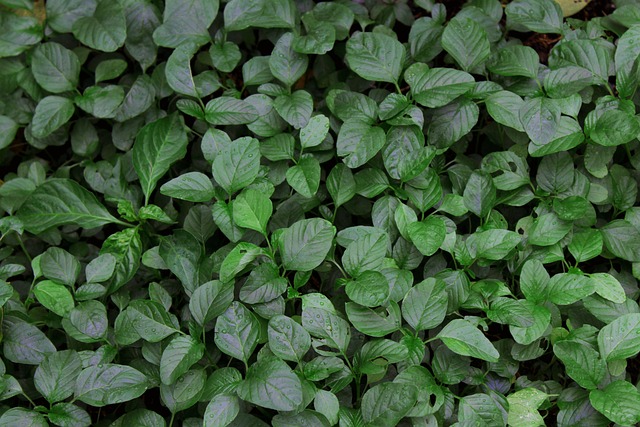
Anthracnose is a fungal disease caused by Colletotrichum dematium. It typically appears as small, circular, sunken spots on the leaves that may be surrounded by a yellow halo. Over time, the spots may enlarge and merge, causing the leaves to turn brown and die.
To prevent anthracnose, it is important to avoid overhead watering and to provide good air circulation around the plants. Fungicides can also be used to control the disease.
3. White Rust
White rust is a fungal disease caused by Albugo occidentalis. It typically appears as white to yellowish spots on the leaves that may be surrounded by a yellow halo. Over time, the spots may enlarge and merge, causing the leaves to turn brown and die.
To prevent white rust, it is important to avoid overhead watering and to provide good air circulation around the plants. Fungicides can also be used to control the disease.
4. Cercospora Leaf Spot
Cercospora leaf spot is a fungal disease caused by Cercospora beticola. It typically appears as small, circular, grayish-white spots on the leaves that may be surrounded by a brownish-red halo. Over time, the spots may enlarge and merge, causing the leaves to turn brown and die.
To prevent cercospora leaf spot, it is important to avoid overhead watering and to provide good air circulation around the plants. Fungicides can also be used to control the disease.
Insect Damage and White Spots
When it comes to white spots on spinach leaves, insect damage is a common cause. Insects such as aphids and whiteflies can cause stippling on the leaves, which appears as tiny white dots. While this damage may not look aesthetically pleasing, it is generally safe to eat spinach with this type of damage.
Aphids and White Spots
Aphids are a common garden pest that can be found on spinach leaves. These small insects have piercing/sucking mouthparts that cause stippling on the leaves. The damage caused by aphids appears as small white dots on the leaves. However, the good news is that aphids do not cause any harm to humans and are safe to eat.
If you notice that your spinach leaves have been affected by aphids, it is important to take action to prevent the infestation from spreading. You can try spraying your plants with a mixture of water and dish soap to remove the aphids.
Alternatively, you can introduce natural predators such as ladybugs or lacewings to your garden to help control the aphid population.
Other Insects Feeding on Spinach
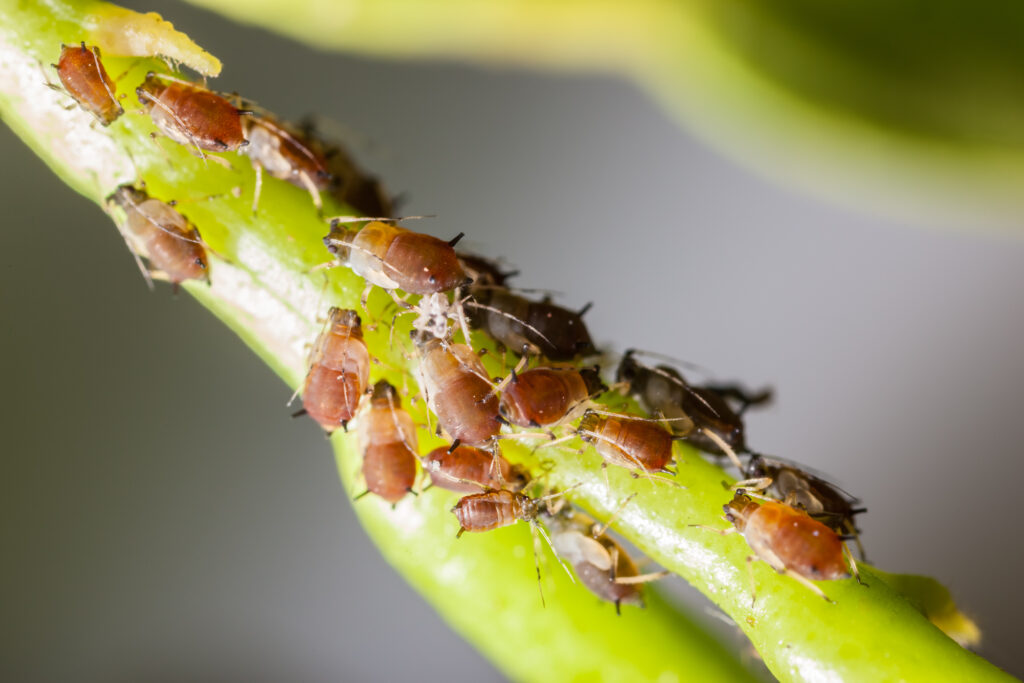
In addition to aphids, there are other insects that feed on spinach leaves and can cause white spots. These include whiteflies, thrips, and leafhoppers. Like aphids, these insects have piercing/sucking mouthparts that cause stippling on the leaves.
While the damage caused by these insects may not look appealing, it is generally safe to eat spinach with this type of damage. However, it is important to thoroughly wash your spinach leaves before consuming them to remove any dirt, debris, or insects that may be present.
If you are concerned about insect damage on your spinach plants, there are several steps you can take to prevent infestations. These include regularly inspecting your plants for signs of damage, removing any damaged leaves, and practicing good garden hygiene by keeping your garden clean and free of debris.
Are White Spots Safe to Eat?
White spots on spinach leaves can be a cause of concern for many people. However, the good news is that these spots are generally safe to eat. These white spots are normal and completely safe to consume.
It is essential to differentiate between white spots and white rust, which is a spinach disease. White rust appears as blisters or lesions on the leaves, and the affected area looks chalky or cheesy. In contrast, white spots are tiny dots on the dark green leaves of spinach.
White spots on spinach can occur due to various reasons, including trichomes, which are natural wax-like substances on the leaves. These trichomes can appear as white spots and are entirely safe to consume. Insects like leafminers can also cause spots on spinach leaves.
These spots are usually small, white dots, and brushing the plants can cause the insects to fly up if they are present.
However, if the white spots on spinach leaves are due to bacteria, fungus, or rot, it is best to avoid consuming them. It is essential to wash the spinach thoroughly before consuming it to remove any dirt or bacteria that may be present.
In conclusion, white spots on spinach leaves are generally safe to eat, and there is no need to worry about them. However, it is crucial to identify the cause of the white spots to ensure that they are not due to any harmful bacteria or fungus.
Prevention and Treatment
Preventing White Spots
Preventing white spots on spinach leaves involves taking measures to ensure that the plants are disease-free and protected from pests. One of the most effective ways to prevent white spots is to start with disease-free seed. It is essential to purchase seed from a reliable source and to avoid using seed that shows signs of disease.
Another way to prevent white spots is to practice good crop rotation. This means planting spinach in a different location each year to prevent the buildup of soil-borne diseases. It is also important to keep the soil healthy and well-drained, as this can help prevent the growth of fungi that cause white spots.
Overhead irrigation can lead to the development of white spots, as it creates a moist environment that is ideal for fungal growth. Therefore, it is best to water spinach at the base of the plant, rather than from above.
Treating White Spots

If white spots do appear on spinach leaves, there are several treatment options available. One of the most common treatments is to use fungicides, which can be applied to the affected plants to kill the fungi causing the white spots. It is important to follow the instructions on the fungicide carefully and to avoid using too much, as this can damage the plant.
Another option is to remove the affected leaves and dispose of them carefully. This can help prevent the spread of the disease to other plants. It is also important to keep the area around the plants clean and free of debris, as this can harbor pests and diseases.
Pesticides can also be used to control pests that may be causing white spots on spinach leaves. It is important to choose a pesticide that is safe for use on vegetables and to follow the instructions carefully.
Maintaining Healthy Spinach Plants
Spinach is a crop that requires proper care and attention to avoid diseases and pests. Maintaining healthy spinach plants is essential to ensure the safety of the produce. Here are some tips to keep spinach plants healthy:
1. Soil Preparation
Spinach plants grow best in well-drained soil with a pH range of 6.0-7.5. Before planting, the soil should be prepared by adding organic matter, such as compost or manure, to improve soil texture and fertility. It is also recommended to conduct soil tests to determine nutrient deficiencies.
2. Watering
Spinach plants require regular watering to maintain consistent moisture levels. However, overwatering can lead to root rot and other diseases. It is best to water spinach plants early in the morning to allow the foliage to dry before the high humidity of the day sets in.
3. Fertilization
Spinach plants require regular fertilization to promote healthy growth. It is recommended to use a balanced fertilizer with equal amounts of nitrogen, phosphorus, and potassium. Over-fertilization can lead to leaf burn and other issues.
4. Pest Control
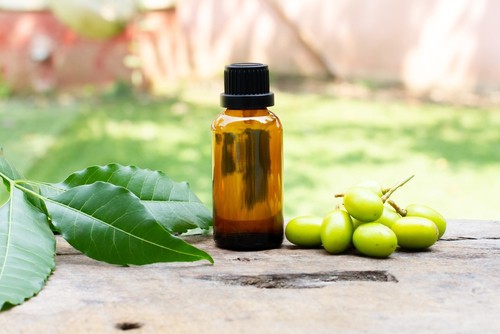
Spinach plants are susceptible to pests such as aphids, whiteflies, and leaf miners. The use of insecticidal soap can be effective in controlling these pests. It is also recommended to remove any weeds or debris around the spinach plants to reduce the likelihood of pests.
5. Disease Prevention
Spinach plants are susceptible to diseases such as white rust and leaf spot. To prevent these diseases, it is recommended to remove any older leaves that show signs of disease and to avoid working with the plants when they are wet. It is also important to maintain good air circulation around the plants.
6. Trichomes
Spinach leaves have tiny hair-like structures called trichomes. These structures are not harmful and are actually beneficial to the plant as they help to reduce water loss and protect the plant from dust and other debris.
Frequently Asked Questions
Are white spots on spinach leaves safe to consume?
Yes, white spots on spinach leaves are safe to consume. These spots are typically trichomes, which are small hair-like structures that are a natural part of the plant. They are completely safe to eat and do not affect the quality or taste of the spinach.
Can brown spots on spinach leaves be harmful?
Brown spots on spinach leaves can be a sign of spoilage or decay, and consuming spoiled spinach can lead to foodborne illness. It is best to discard any spinach that has brown spots or other signs of spoilage, such as a slimy texture or a foul odor.
Is it safe to eat spinach with yellow spots on the leaves?
Yellow spots on spinach leaves can be a sign of nutrient deficiencies or disease. While consuming spinach with yellow spots is generally safe, it may not be as nutritious as healthy spinach. It is best to choose spinach with vibrant green leaves and no signs of discoloration.
What causes white patches on spinach leaves?
White patches on spinach leaves can be caused by a fungal disease called white rust. This disease is caused by the fungus Albugo occidentalis and can cause significant damage to spinach crops. While consuming spinach with white rust is generally safe, it may not be as nutritious as healthy spinach.
Are dark spots on spinach leaves a sign of spoilage?
Dark spots on spinach leaves can be a sign of spoilage or decay, and consuming spoiled spinach can lead to foodborne illness. It is best to discard any spinach that has dark spots or other signs of spoilage, such as a slimy texture or a foul odor.
How can white spots on spinach leaves be treated?
If white spots on spinach leaves are caused by white rust, it may be difficult to treat. The best course of action is to remove and discard any infected leaves and take steps to prevent the spread of the disease, such as improving air circulation and avoiding overhead irrigation.
If white spots are caused by other factors, such as trichomes or nutrient deficiencies, no treatment is necessary.

Hey, I’m Lisa and I’ve been an avid gardener for over 30 years. I love writing, talking and living in the garden! Feel free to connect with me on my socials below

